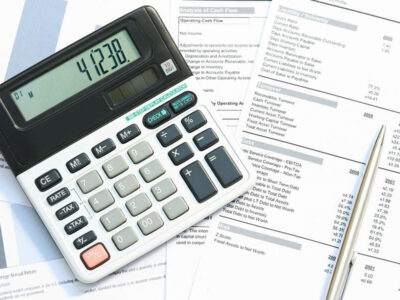
It is generally more useful than straight-line depreciation for certain assets that have greater ability to produce in the earlier years, but tend to slow down as they age. The examples below demonstrate how the formula for each depreciation method would work and how the company would benefit. Each method of depreciation depreciates an asset by the same overall amount over the asset’s life, but each method does so on a different schedule. In other words, the major difference between straight line depreciation and reducing balance depreciation is timing. Given its nature, the DDB depreciation method is best reserved for assets that depreciate rapidly in the first several years of ownership, such as cars and heavy equipment.
- Since public companies are incentivized to increase shareholder value (and thus, their share price), it is often in their best interests to recognize depreciation more gradually using the straight-line method.
- Regarding this method, salvage values are not included in the calculation for annual depreciation.
- Depreciation is an accounting practice used to spread the cost of a tangible asset, such as a vehicle, piece of equipment, or property, over its useful life.
- That boosts income by $1,000 while making the balance sheet stronger by the same amount each year.
- One method is called partial year depreciation, where depreciation is calculated exactly at when assets start service.
When to use the DDB depreciation method
(An example might be an apple tree that produces fewer and fewer apples as the years go by.) Naturally, you have to pay taxes on that income. But you can reduce that tax obligation by writing off more of the asset early on. As years go by and you deduct less of the asset’s value, you’ll also be making less income from the asset—so the two balance out. The difference is that DDB will use a depreciation rate that is twice that (double) the rate used in standard declining depreciation. If the double-declining depreciation rate is 40%, the straight-line rate of depreciation shall be its half, i.e., 20%. Another thing to remember while calculating the depreciation expense for the first year is the time factor.
Our Team Will Connect You With a Vetted, Trusted Professional
- Over the depreciation process, the double depreciation rate remains constant and is applied to the reducing book value each depreciation period.
- Depreciation calculations determine the portion of an asset’s cost that can be deducted in a given year.
- While some accounting software applications have fixed asset and depreciation management capability, you’ll likely have to manually record a depreciation journal entry into your software application.
- This is just one example of how a change in depreciation can affect both the bottom line and the balance sheet.
- We collaborate with business-to-business vendors, connecting them with potential buyers.
- These financial relationships support our content but do not dictate our recommendations.
- Get instant access to video lessons taught by experienced investment bankers.
The information provided on this website does not, and is not intended to, constitute legal, tax or accounting advice or recommendations. All information prepared on this site is for informational double declining balance method purposes only, and should not be relied on for legal, tax or accounting advice. You should consult your own legal, tax or accounting advisors before engaging in any transaction.
Definition of Double Declining Balance Method of Depreciation

In case of any confusion, you can refer to the step by step explanation of the process below. With declining balance methods of depreciation, when the asset has a salvage value, the ending Net Book Value should be the salvage value. Under Straight https://www.bookstime.com/ Line Depreciation, we first subtracted the salvage value before figuring depreciation. With declining balance methods, we don’t subtract that from the calculation. What that means is we are only depreciating the asset to its salvage value.
- The best reason to use double declining balance depreciation is when you purchase assets that depreciate faster in the early years.
- The double declining balance method of depreciation, also known as the 200% declining balance method of depreciation, is a form of accelerated depreciation.
- The second scenario that could occur is that the company really wants the new trailer, and is willing to sell the old one for only $65,000.
- In the accounting period in which an asset is acquired, the depreciation expense calculation needs to account for the fact that the asset has been available only for a part of the period (partial year).
- It reflects the asset’s reduction in value due to wear and tear, obsolescence, or age.
You’ll have to do more math, or get an accountant’s help
This happens because of the matching principle from GAAP, which says expenses are recorded in the same accounting period as the revenue that is earned as a result of those expenses. While you don’t calculate salvage value up front when calculating the double declining depreciation rate, you will need to know what it is, since assets are depreciated until they reach their salvage value. The double declining balance depreciation rate is twice what straight line depreciation is. For example, if you depreciate your machine using straight line depreciation, your depreciation would remain the same each month. The best reason to use double declining balance depreciation is when you purchase assets that depreciate faster in the early years.

How confident are you in your long term financial plan?

Various software tools and online calculators can simplify the process of calculating DDB depreciation. These tools can automatically compute depreciation expenses, adjust rates, and maintain depreciation schedules, making them invaluable for businesses managing multiple depreciating assets. The DDB method involves multiplying the book value at the beginning of each fiscal year by a fixed depreciation rate, which is often double the straight-line rate. This method results in a larger depreciation expense in the early years and gradually smaller expenses as the asset ages.


